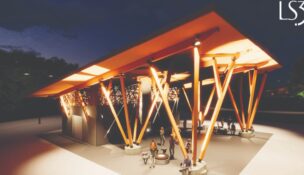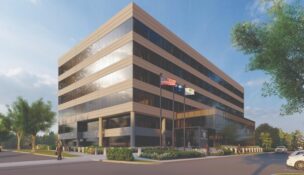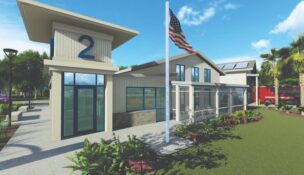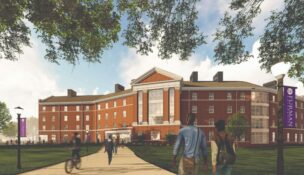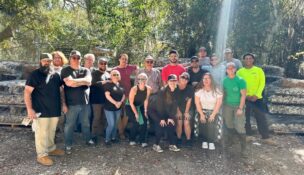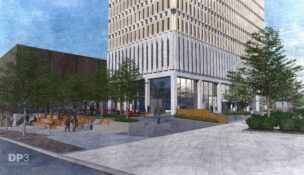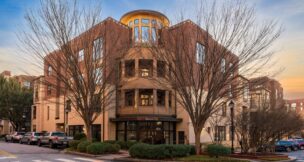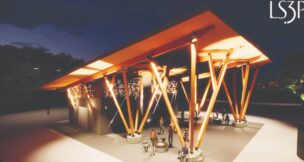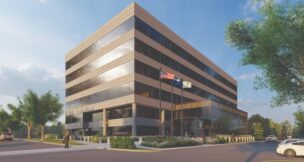How affordable housing has long-lasting Upstate community impacts
Krys Merryman //August 25, 2023//
“When I was a kid, my family experienced housing instability from a number of things.”
That experience was one of several that sparked Tina Belge’s passion for advocating for more affordable housing.
Belge, the Greenville Housing Fund policy and advocacy director, said she had experienced living in other people’s homes during childhood.
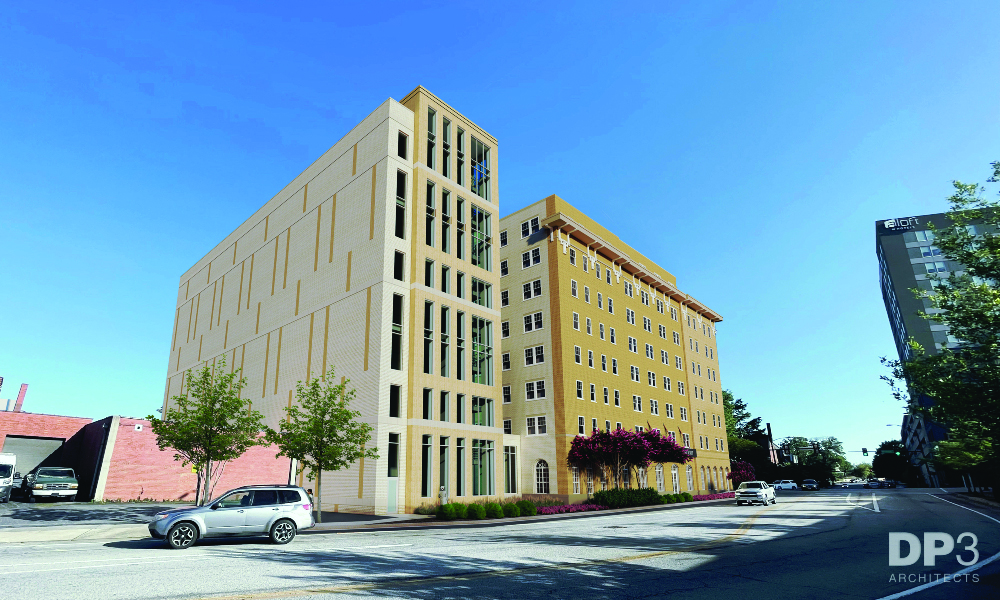 “I was so young, and I don’t feel like it has impacted me as much, but after studying more about the effects of housing instability, I found that if you move more than one time under the age of 5, your educational attainment is well stifled,” she said. “I found this community in going into others’ homes, and after that, anything community focused I could get involved with such as AmeriCorps, I fell in love with it. I’ve always had a passion for public service.”
“I was so young, and I don’t feel like it has impacted me as much, but after studying more about the effects of housing instability, I found that if you move more than one time under the age of 5, your educational attainment is well stifled,” she said. “I found this community in going into others’ homes, and after that, anything community focused I could get involved with such as AmeriCorps, I fell in love with it. I’ve always had a passion for public service.”
In 2020, the Greenville Housing Fund adopted a strategic plan with the city and county, which showed a deficit of 20,000 affordable housing units. That was then.
Belge said they think the number is even higher now.
“Our goal is to cut this deficit in half over the next 10 years,” she added.
However, the goal seems increasingly difficult to attain, especially with multifamily growth being more of a focus on the county side, she said.
Greenville Housing Fund President and CEO Bryan Brown said the mission of the nonprofit organization is to ensure housing affordability solutions to support the county’s growing economy and community.
There are three primary ways they do that, he added.
First, they raise and deploy capital to support the creation and preservation of affordable housing across the community. Second, through advocacy and community education, they ensure the right public policies are in place and at what level of public support. Third, searching for and deploying land bank/trust concepts to encourage donated parcels from the city or individuals.
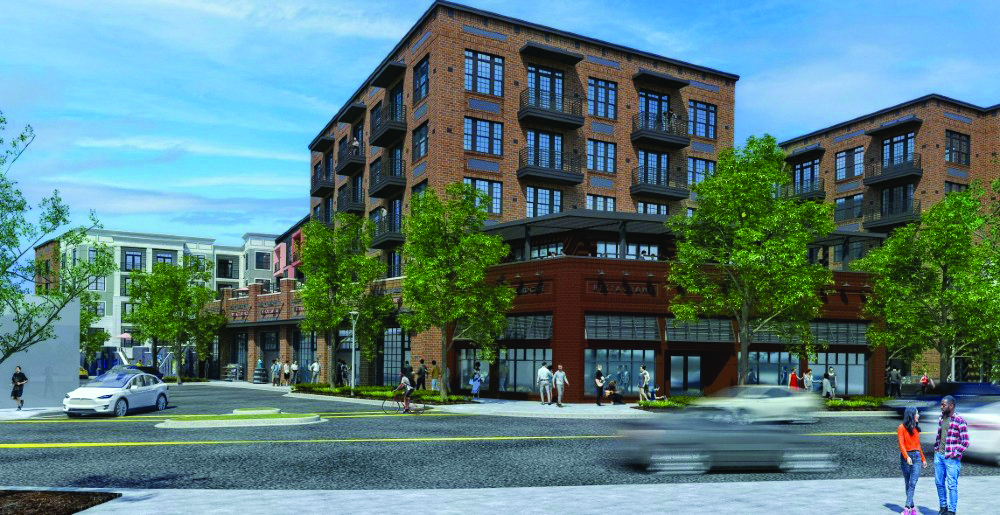 Brown said he spent a lot of time working in the child welfare system, and before that, he had done work in affordable housing and family services.
Brown said he spent a lot of time working in the child welfare system, and before that, he had done work in affordable housing and family services.
“I saw the impact of housing insecurity on families’ stability and health,” he said. “The reality is that sometimes families lose their children because they lack affordable housing, according to the system.”
“It’s criminalizing the poor,” said Belge.
As a society, he said, other investments are made such as in nursing programs for first-time moms, targeting lower-income families. But without stable housing as an anchor, a lot of those other efforts may fail.
“So in other words, I have learned that affordable housing is a starting point for other good things and families can grow and prosper when they have stable and affordable housing,” said Brown. “And I think it’s good for communities. We can’t compete in a global economy if we don’t have housing that’s attainable to our workforce, and in this community, a big part of our workforce is in the service and tourism sector. These are lower wage jobs, but they benefit our entire community and workforce/economic ecosystem. We need housing that is attainable to those who are serving us in restaurants, in grocery stores, first responders, teachers — all of these are examples of families who need affordable housing.”
A local, state and federal effort
There are many layers of the capital stack needed to create affordable housing solutions, said Belge.
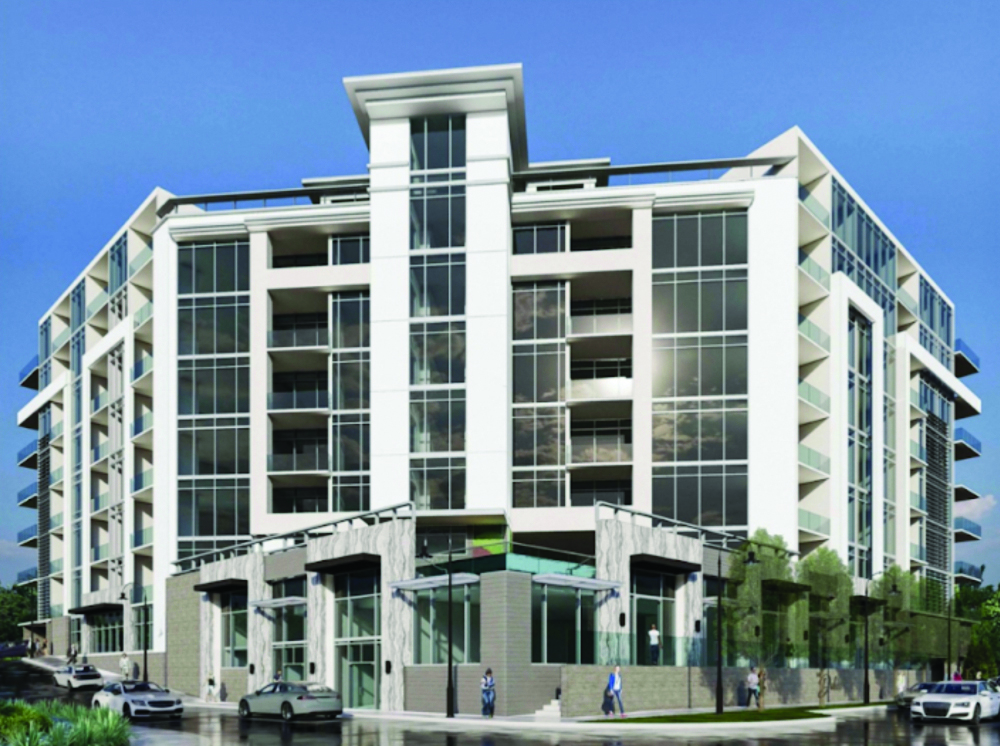 “To make all of this work you need local, state and federal partners and policies working together,” she added.
“To make all of this work you need local, state and federal partners and policies working together,” she added.
There are several factors in the market for new affordable housing and preservation of existing affordable housing, said Brown.
On the local level, the city of Greenville said its Community Development Annual Action Plans reference affordable housing plans and funding allocations for each year. However, the build schedules vary. Those plans are available online at www.greenvilleSC.gov/282/HUD-reporting.
There are currently more than 520 affordable housing units planned for construction, according to the city.
“Having affordable housing in the city of Greenville is extremely important to make sure our city is the kind of place where everybody can find a place to be a part of,” said Greenville Mayor Knox White. “It's important economically. It's important socially. At the same time, it's part of managing our growth. You have to address issues of affordability and housing because you're in a growing community.”
Greenville County affordable housing projects in the works or announced in 2023 are as follows:
- The Greenville Summit: A downtown Greenville historic building that was turned into affordable housing units for seniors will be getting an eight-story expansion to add additional units.
- The Union Bleachery project, at 3335 Old Buncombe Road, will offer affordable housing.
- The Sullivan 180-unit development in the Berea area of the county is currently leasing units.
- The Delano development, in which 20% of the 115-unit residential building will be dedicated to affordable housing.
- The Woven to include 44 affordable housing units.
The Greenville Housing Fund purchased Century Plaza Apartments, formerly known as The Ivy, a 212-unit complex on Century Drive in the Overbrook neighborhood for $31 million. It is the Greenville Housing Fund’s largest financial transaction to date.
“We were able to save these from flipping to the market” which kept them affordable, said Belge.
This year, Greenville County approved a budget that includes $5 million for affordable housing. In the past, the allocation has been aroundt $1 million per year, said Belge, so steps are being taken for improvements in the county. A county tax abatement was also passed last year, which incentivizes affordability for 20% of multifamily units, and in turn, creates a property tax break for that developer, she said.
“This is a lot of progress that has been made with County Council and leadership to make new investments and to support a new policy that provides property tax relief for developments open to offering affordable housing,” said Brown. “That’s a pretty big accomplishment in the county.”
There is accelerated funding with the city at about $2.5 million a year, said Brown. The purpose is to get more capital up front so larger multifamily projects that can deliver affordable housing are supported in the city. However, the Greenville Housing Fund is relying on the city’s commitment of that funding.
The city’s new development code and affordable housing incentives also went into effect in June.
“This has been several years in the making, and the city is keeping it as simple as possible for developers to follow,” Brown said. “Under the new development code, it allows more home types to be built, not just single family or larger multifamily. We have a lot more options. It’s a great step forward for affordability.”
Greenville County is also looking at a unified development ordinance, which would be just like the city’s code and would also similarly impact development and housing within the county, said Belge.
“What we're trying to do is push back against the market forces and provide around the city enclaves where we can donate land or work with others to assure affordable housing in certain places in the city,” said White. “And that's been our game plan. We can't control the market, but we can push back against it and the one way we do that is with opportunities to implant affordable housing in neighborhoods across the city.”
Brown said one tool the state doesn’t have is inclusionary zoning. In other communities around the country, he said, this type of zoning means if you want to build project A and it’s going to be at market rate, it has to include a certain percentage of affordability, or the project will not be approved under the zoning code. Although some legislation has been proposed at the state level to create this tool for municipalities to voluntarily adopt, none of it has become law.
With growth comes challenges
Subsidy and general financing are significant challenges to affordable housing, said Belge.
The inflationary period the country has been in since the start of the COVID-19 pandemic, said Brown, has caused construction costs to increase dramatically.
“We are living in a robust and thriving community with a growing economy, a rapidly growing population here, which puts a lot of price pressure on the community, and as demand goes up, cost goes up,” said Brown. “That’s unintentionally hurting those who have already been living here for a while.”
The price of land, especially in the city limits, anywhere close to downtown, has become an increasing challenge, even in the county now, said Brown. Also, with the rise in interest rates over the last few years, the cost of borrowing impacts affordable housing.
“Because at the end of the day, if we do it right, there really is no difference from other types of housing, except that we try and make the units more attainable for lower income families,” he added. “We want the quality to be the same as what currently exists with new developments in the market, but when we try to lower cost we are bumping up against all these other variables that exist and have been exacerbated over the last 18 months.”
As population has grown, said Brown, area median income has continually increased over the last five to 10 years. So, when median income goes up to around $70,000 annually in the city and county, but longtime residents are making $30,000, they’re just falling further behind, he said.
“So that’s creating more of a gap for what you can afford to pay versus what housing actually costs, and we are trying to help with this gap,” Brown added. “However, we’re not keeping up with delivering these types of units relative to our population growth and demand. The majority of affordable housing is either in or near Greenville proper. We want to grow smartly and not use up too much of the natural resources that people love about our community.”
Belge said people need to be able to walk to a grocery store, hospital, educational institutions, etc.
“It’s really about building out a fully supported community,” she said. “Although it’s much more costly to build in Greenville.”
But, because Greenville is the densest city in the Upstate, this is where you’re most likely to find more affordable housing.
“The stigma around affordable housing is not based in fact or reality,” said Brown. “Some argue that we don’t want more affordable housing in our communities because it will increase crime, while in fact the truth is the opposite. When people are in an unstable household, such as struggling to pay rent and provide for their families, that’s when we see an increase in crime, as well as a negative impact on mental health.”
If kids are more stable in their homes, said Belge, their educational attainment is much higher and employment opportunities are greater.
“These are impacts at the individual level,” she added. “The longer impacts for families start at the individual.”
Keeping neighborhoods diverse and having a workforce that does not have to move farther and farther out to afford housing is crucial, said Belge.
“This is the workforce that supports our hospitality and tourism industry,” she said.
For more information on affordable housing options visit https://greenvillehousingfund.com/.
l






